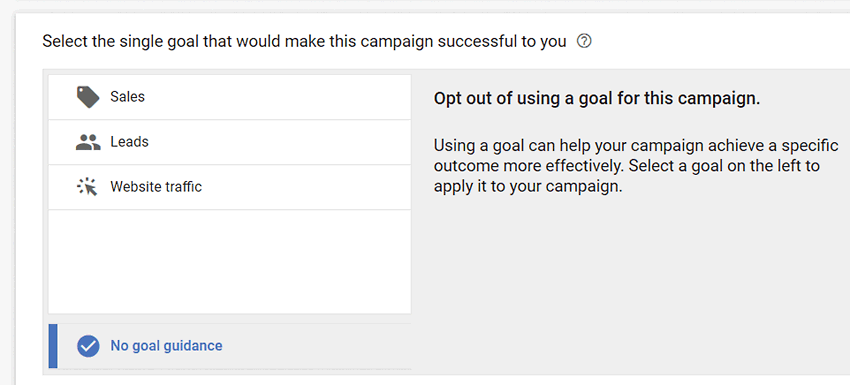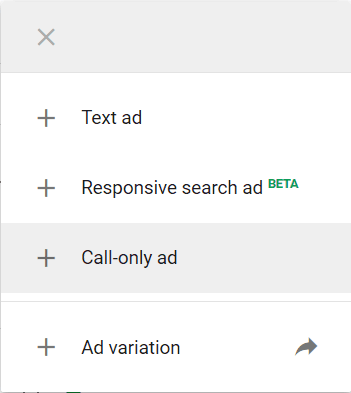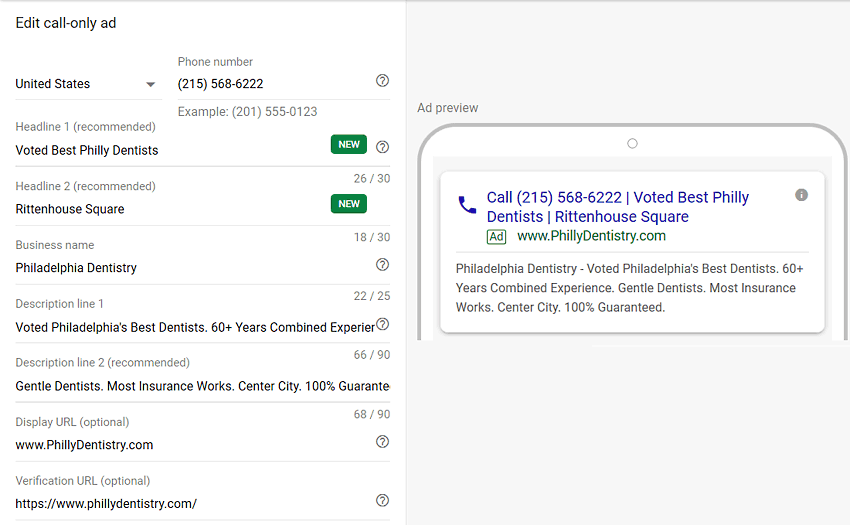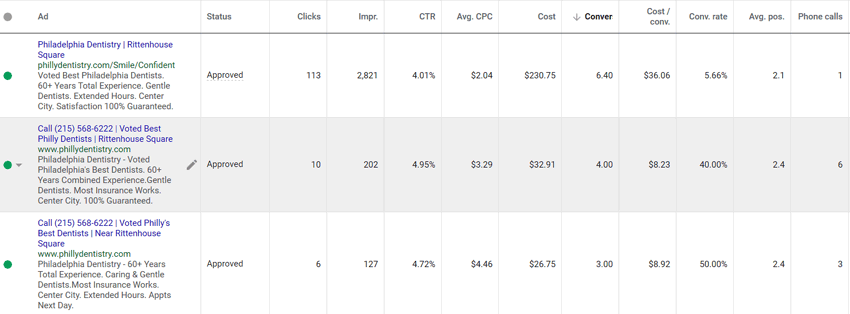Call-only ads are a good way to drive calls to your business directly from ads. Call-only ads are only shown on devices that can make calls, such as smart phones. Over time however, we’ve found that in some highly competitive markets, the quality score of keywords associated with a call-only campaign can drop below 3/10, restricting their exposure. One way around this is to include call-only ads amongst search ads in a search campaign on Google Ads. This article shows how to include call only ads within a search campaign and their benefits.
Search Campaigns
Google’s search campaigns show text ads on the Google search network and optionally on Google search partner sites. Expanded text ads can utilize 10 types of extensions, that expand your ads with additional information such as sitelinks, location, message, and callout extensions. Call-only ads use only 3 of these types of extensions: location, callout, and structured snippets. This is one reason why call-only ads tend to have lower quality scores than text ads. You can improve the quality score of call-only keywords and avoid competing duplicate keywords by mixing call-only ads with text ads within a search campaign.
No Goal Selected
One easy way to allow call-only ads within a search campaign is to opt out of setting a goal for your target campaign (see Figure 1). Instead of selecting sales, leads, or website traffic you can select “no goal guidance” under settings for your campaign. You can always select a goal later once you have your campaign ads set up (and duplicate/modify call only ads after you’ve set a goal).
Add Call-Only Ad
Next under the “Ads & Extensions” tab, select the large plus “+” sign to add a new ad. Now that you’ve got no goal selected a popup menu appears with three (not two) different types of ads, Text ad, Responsive search ad, and Call-only ad. Select call-only to create a new call-only ad (see Figure 2).
Creating a Call-Only Ad
First enter the phone number you want shown in your ad (see Figure 3). In this example we show the office phone number, but in production ads we use a call tracking number to track call only calls on our website call tracking system. Even though Google can track call only conversions with any phone number, using our own call tracking number puts the data all in one place.
Next enter ad headlines up to 30 characters each. We’ve found that understated informational headlines tend to convert better (Philadelphia Dentists vs. Voted Best Philly Dentists, and Rittenhouse Square vs. 100% Guaranteed, etc.). Enter the Business Name, and two descriptions that form the body of the ad. This is the place to trumpet your USP and the benefits to users of contacting your business. Finally enter your display URL, we typically enter relevant keywords, an offer, or in some cases leave it blank after the URL.
Results
We’ve found that for search campaigns with both text and call only ads the keywords in the campaign tend to have higher quality scores than pure call-only campaigns. The keywords appear to be lifted by the text ads with their higher number of extensions. You also avoid having competing duplicate keywords by having separate call-only and search campaigns when targeting the same phrases (like “philadelphia dentist”). The call-only ads in this example had much higher conversion rates and lower cost per conversion than the text ads (see Figure 4). This is typical behavior when comparing call only ads to search ads as there are fewer steps to generate a call.
Conclusion
Mixing call-only ads with conventional text ads in a search campaign is a good way to boost keyword quality scores and avoid having identical keywords compete in separate campaigns. Our early results show promising results.




